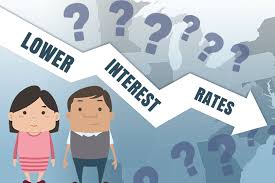How Do Interest Rates Help Small Businesses Grow And Expand?
 How do interest rates affect your business? The Federal Reserve uses the interest rate to accelerate or decelerate economic activity. By raising borrowing costs and making loans more expensive, the Fed can help curb growth, decrease the money supply and decrease inflation. Decreasing rates, on the other hand, stimulates economic activity and encourages businesses to expand and hire more workers.
How do interest rates affect your business? The Federal Reserve uses the interest rate to accelerate or decelerate economic activity. By raising borrowing costs and making loans more expensive, the Fed can help curb growth, decrease the money supply and decrease inflation. Decreasing rates, on the other hand, stimulates economic activity and encourages businesses to expand and hire more workers.
Assuming the economy continues to grow consistently, lower interest rates make it less expensive for businesses to get loans. Lower interest rates are also a catalyst for starting a business and undertaking an expansion. In addition to ramping up production. This is a self-reinforcing cycle that boosts economic activity and makes for a favorable business environment.
This can have a broader impact on small businesses. It affects both in terms of the costs outside their loans and revenue growth.
Consumer Confidence and Purchasing Power
Lower federal interest rates can help stimulate economic activity. This can translate into more cash to burn for customers. In return generate more revenue for businesses.
Lower interest rates make it easier for a business to undertake expansion or ramp up production. It also does the same for that business’s customers.
Lower borrowing costs can also filter down to consumer debt, lowering payments for those with credit card, student and housing debt.
However, the Federal Reserve also has to strike a balance with inflation. Cheaper borrowing costs means a larger money supply for borrowers and consumers, which can translate into the higher prices that signal growing inflation and that erode customer’s purchasing power.
Employment
More business – and more loans – means businesses hire more and increase the employment rate, giving consumers wages they can use to buy goods and services.
With one in five workers saying that their economic situation having worsened since the Fed began raising rates in 2022, the hot job market of previous years has since cooled – giving employers more leverage in negotiating wages and managing personnel costs.